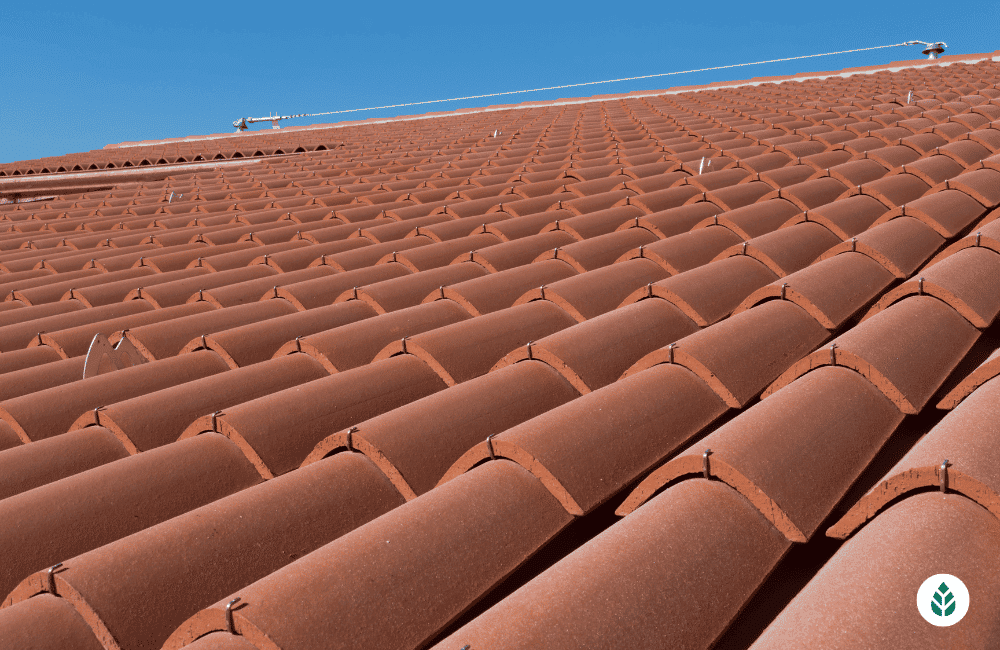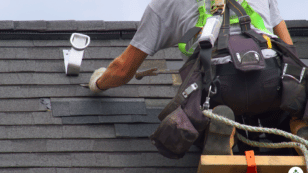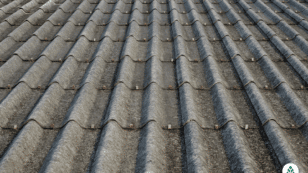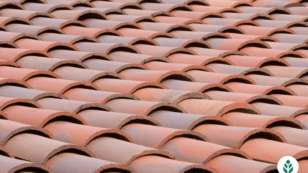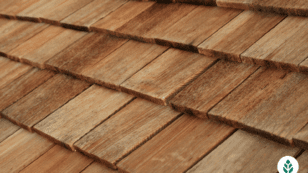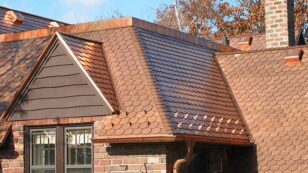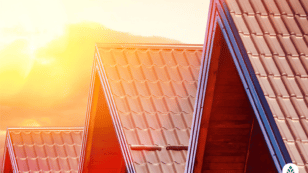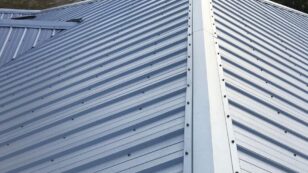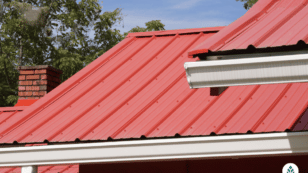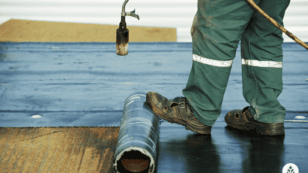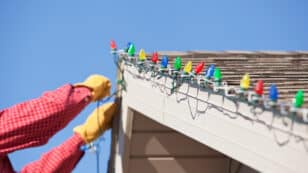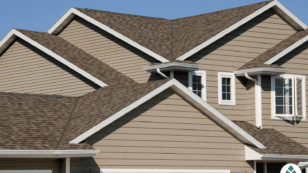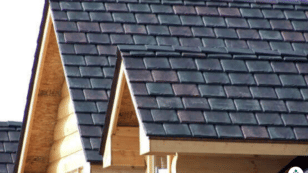
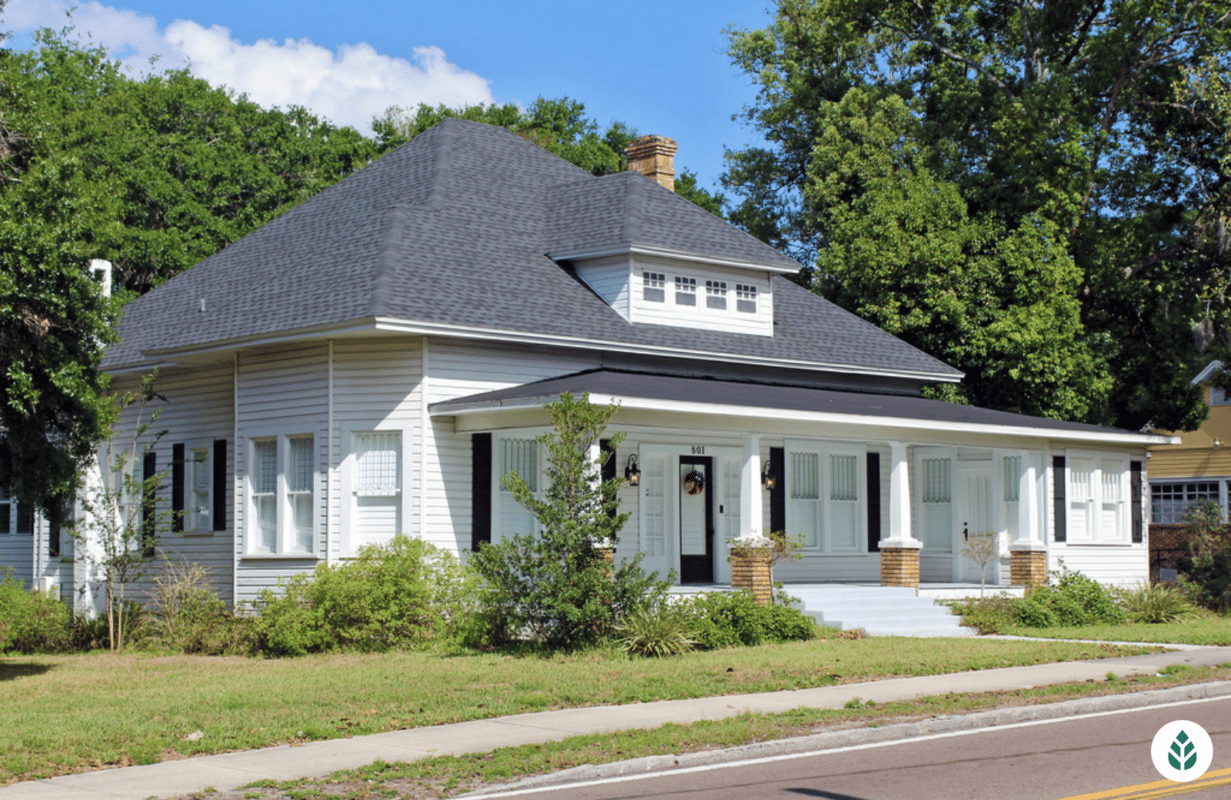
Tile Roof: Usefulness, Costs & Installation Info (2024 Guide)
In this EcoWatch guide on clay tile roofs, you’ll learn:
- What are clay roofing tiles?
- What are the different styles of clay roofing?
- What are the pros and cons of clay tile roofs?
- How long can these tile roof last?
This guide has helped many homeowners learn about clay tile roofs and figure out if this style would be the best for their home. Enter your zip code below to receive a personalized quote on roofing options near you.
Each product and or company featured here has been independently selected by the writer. You can learn more about our review methodology here. If you make a purchase using the links included, we may earn commission.
Just about every homeowner in America is likely familiar with asphalt shingle roofing products, but there are quite a few other roof material options available. Clay roof tiles, a much less prevalent type of roof material, offer a unique appearance and have several benefits over asphalt shingles.
In this guide to clay tile roofs, we’ll discuss what these roofs are made out of, the different styles you can choose and how long you can expect this type of roof to last. We’ll also go over the pros and cons of tile roofs so you can decide if this is the right type of roof for your home.
What Is a Clay Tile Roof?
A clay tile roof is one that is made out of individual tiles that, traditionally, were made from fired clay or an unglazed terracotta material. Some of the more modern clay roof tiles are actually made out of colored concrete, but the ones that are meant to provide the same benefits as traditional clay roofs are made out of molded, baked clay.
The tiles come in a variety of shapes that interlock and attach to your roof deck or underlayment using fasteners. The tile shape determines the finished appearance of your roof, which can be quite appealing.

Power Home

Average cost
Pros
- Positive industry reputation
- Lifetime or lengthy warranty
- 10+ years of experience
- Positive customer reviews
- Uses eco-friendly materials
- Well-trained, certified installers
- Variety of roofing styles available
Cons
- Limited variety of roofing materials
- Short or nonexistent warranty
- No financing information available
- Expensive
- Little information available on company website

Erie Home

Zero Down - 18 months same as cash with minimum monthly payment
Average cost
Pros
- Lifetime or lengthy warranty
- Widespread availability
- 10+ years of experience
- Positive customer reviews
- Uses eco-friendly materials
- Financing options available
- Well-trained, certified installers
- Uses durable materials meant to last
- Variety of roofing styles available
Cons
- Limited variety of roofing materials
- Expensive

Aspen Contracting

Average cost
Pros
- Positive industry reputation
- Lifetime or lengthy warranty
- Widespread availability
- 10+ years of experience
- Positive customer reviews
- Financing options available
Cons
- Little information available on company website

Baker Roofing
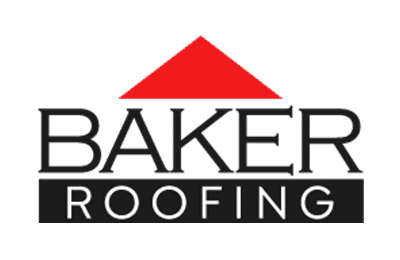
Average cost
Pros
- Variety of roofing materials available
- 10+ years of experience
- Positive customer reviews
- Uses eco-friendly materials
- Financing options available
- Affordable
- Well-trained, certified installers
- Uses durable materials meant to last
- Variety of roofing styles available
Cons
- Short or nonexistent warranty
- Limited service area
Different Types of Clay Roof Tiles
There are quite a few different shapes available in clay tile products, each of which delivers a characteristic appearance when installed to create a new roof. We’ll discuss these styles briefly below.
- Spanish clay tiles: Look like a series of channels to route runoff down off the roof
- Double Roman clay tiles: Look just like Spanish tiles but have visible ribs that provide a unique and often more elegant appearance
- Barrel tiles: Look like Spanish tiles but with a taper on one end, making them ideal for unique roof shapes and round roofs
- Pantile roof tiles: S-shaped and produce a similar but more cohesive appearance than Spanish clay tiles
- Scandia tiles: Waved and similar to pantile roof tiles but more asymmetrical
- Flat shake tiles: Made out of dyed concrete and meant to look like traditional clay tile, but less energy-efficient than genuine clay tile roofs
- Riviera tiles: Similar to Double Roman tiles but with a less pronounced bowing
- French tiles: Also similar to Double Roman tiles but have much wider channels to drain heavy rainfall
How Long Do Clay Roof Tiles Last?
Clay roof tiles are among the most durable of all roofing materials, and a high-quality clay roof can last for up to 100 years.1 This is about five times as long as the more popular asphalt shingle roofs, making clay tiles potentially much more cost-effective over time.
Since clay roofs last significantly longer than other styles, they typically come with a much longer warranty when installed by a professional roofing contractor.
How Much Do Tile Roofs Cost?
The cost of a tile roof depends largely on the type of type you choose. Fired ceramic clay tiles can be the most expensive, while cement tiles tend to be cheaper. Here’s a breakdown of how the type of material affects roof replacement costs and roof lifespan:
| Roofing Material | Material Price per Square Foot | Estimated Cost for 1,700-Square-Foot Roof Installation | Estimated Lifespan |
| Cement tile | $4 to $10 | $17,000 to $34,000 | 50 years |
| Terracotta clay | $6 to $15 | $30,000 to $45,000 | 100 years |
| Fired ceramic clay | $8 to $20 | $34,000 to $51,000 | 100 years |
Pros and Cons of Clay Roof Tiles
As is the case with all roof materials, there are upsides and downsides to installing a clay roof. Here’s a quick overview:
Some of the most prominent benefits of a clay tile roof include:
+ Excellent durability: While clay might not seem like the most hardy material, it can withstand some extreme weather. In fact, it’s popular in areas like Florida and Nevada, which are prone to hurricanes, tropical storms, extreme heat and/or monsoons. Clay is also fire-resistant, although it isn’t fireproof like slate roof tiles.
+ Unmatched lifespan: As mentioned above, clay roofs can last for up to 100 years. This is longer than any other common roofing material and about five times as long as the typical asphalt shingle roof.
+ Eco-friendly: Clay comes from the earth, so clay roof tiles aren’t made out of any synthetic materials or components that could be harmful to the environment. When clay tiles are removed from your roof, they are fully recyclable.
+ Offer excellent energy efficiency: Clay is a dense material that acts as an outstanding insulator. Although clay roofs aren’t quite as energy efficient as reflective metal roofs, they do help regulate the temperature in your living space better than asphalt shingles.2
+ Available in many colors and styles: Just like metal and asphalt roof materials, clay roof tiles can be made in a variety of colors, shapes and sizes to provide a unique appearance that suits your taste. Clay tiles can also be made to look like other shingle types, including wood shake.
+ Great for heavy rainfall: Clay tile roofs are excellent for routing large amounts of water off of your roof. They’re great for areas where heavy rainfall is expected in short periods of time.
Of course, there are some drawbacks to installing a new clay roof as well. Some downsides of clay roofing include:
– Don’t always fit the neighborhood aesthetic: Clay roofs are highly energy efficient, so they’re most popular in hot climates like Florida, California and Texas. While they generally provide excellent curb appeal, they can sometimes look out of place in more temperate or cooler climates.
– More expensive than asphalt up front: Clay roof tiles average around $15,000 to install, which is about twice as expensive as an asphalt shingle roof.
– Not ideal for DIY roof replacement: Installing clay tiles is a challenging process, not only because the tiles can break easily during installation but also because laid tiles are difficult to walk on. DIY tile roof installation is not recommended, and you should defer to an experienced roofing company for a tile roof system.
– Heavy: Clay is significantly heavier than traditional asphalt roof shingles. Some structures might not be able to support clay roof tiles, and those that can might still need reinforcement to ensure there are no structural issues.
– Repairs can be expensive: Relatively few roofers are skilled in clay roof repairs. The labor and the materials for roof repairs can get expensive.
– Crack with impact: Clay is highly durable, but it doesn’t stand up well to impact. This roof style isn’t ideal for areas with some extreme weather, like tornadoes or strong winds that can drop tree limbs or sizable debris on them.
– Not suitable for flat or low-slope roofs: Clay tiles are great for steeply sloped roofs, but they shouldn’t be installed on flat or low-slope roofs, as they can leak in these configurations.
FAQ: Clay Tile Roof
Below, we’ll answer some of the questions we get asked most often from homeowners about tile roofs.
Clay tile roofs commonly last for between 80 and 100 years. This is, by far, the most durable roofing material you can install on your home.
The answer to this question depends on a few things, including your personal preference, how much you’re willing to spend up front and the climate you live in. If you’re going for durability or low long-term costs, a clay roof will be far superior. If you’re looking for affordability, shingles will typically be a better choice.
A clay tile roof typically costs around $15,000, which is nearly double the average cost of an asphalt shingle roof. Your specific total will depend on many factors, though, and the price can range from $10,000 up to around $30,000.
Yes, absolutely! In fact, installing solar panels on tile roofs is ideal, as there is minimal risk of having to replace your roof during the panels’ lifespan, given how long clay tile roofs last.
With that being said, fewer solar companies will be equipped to handle solar panel installation on clay roofing in temperate or colder climates where clay tile roofs aren’t terribly popular. Solar panel installers in areas where clay roofs are prevalent should be able to handle the installation without any issues.

 233k
233k  41k
41k  Subscribe
Subscribe 
